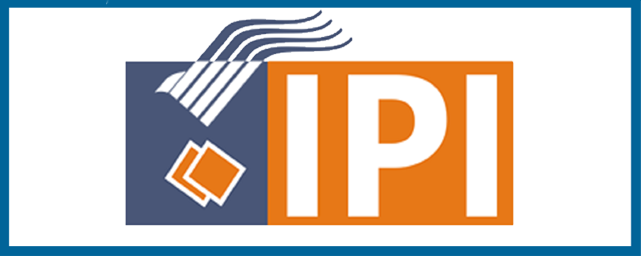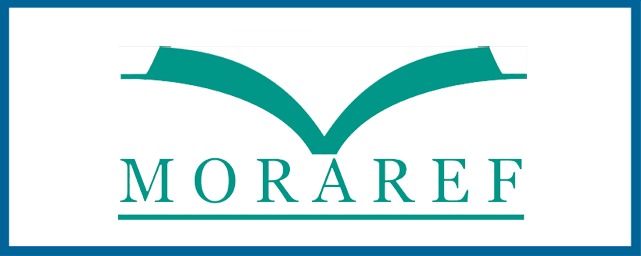Understanding of The Customers’ Perception on Islamic Banking and Financial Services in Malaysia
DOI:
https://doi.org/10.5281/zenodo.4480322Keywords:
Customer Perception, Financial Products, Financial Services, Islamic Banking, MalaysiaAbstract
The main objectives: The main objectives of this study are to delve customers’ knowledge and perception of Islamic banking financial products and services. Background Problem: The background problem is lack of awareness and understanding of the Islamic finance industry is a major challenge for clients, investors, and other stakeholders. Islamic Banking and Finance (IBF) is a booming sector in the financial industry. However, it is still at a developing stage in the economy. Clients awareness is a crucial step to attain its business and social-welfare objectives by abiding by Islamic commercial law. Research Methodology: The research methodology implemented was empirical/inductive. A survey via questionnaire was conducted on 135 banking clients via questionnaires; a comparison between Bank Islam Malaysia Berhad (BIMB) and non-BIMB clients was exemplified using mean and T-test statistics, on their level of knowledge and understanding of the different principles, products, and services of IBF. Results and Findings: Results and findings have inferred that there is not much significant difference in their level of knowledge and understanding. Then it was examined whether there was a significant relationship between the knowledge of the clients and their preference for IBF services. Research Contribution: The contribution of this study can help the Islamic banking industry gain insight into the current level of understanding of IBF products and services among the clients. Conclusion: The conclusion of the study indicates that there must be more attempts to educate clients and other stakeholders of the Islamic banking industry. Finally, it was also concluded that the clients have a better perception of the prospect of the IBF industry in Malaysia, despite it being at a developing stage.
References
Abdul-Rahman, A. R. (2003). Ethics in accounting education: Contribution of the Islamic principles of Masalih. IIUM Journal of Economics and Management 11 (1), 1-18.
Abozaid, A., & Dusuki, A. W. (2007). The challenges of realizing Maqasid al-Shari'ah in Islamic banking finance, 1-19.
Ahmad, N., & Haron, S. (2002). Perceptions of Malaysian corporate clients Perceptions of Malaysian corporate clients. International Journal of Islamic Financial Services, 3(1), 13-29.
Ahmed, H. (2004). Role of zakat and awqaf in poverty allevation. Jeddah: Islamic Research and Training Institute, Islamic Development Bank Group.
Ali, Q. (2018). Service quality from customer perception: evidence from carter model on Bank Islam Brunei Darussalam (BIBD). International Journal of Business and Management, 13(2), 138.
Al-Saud, M. A.-F. (2000). A state of trusteeship. (A. Siddiqi, Ed.) Anthology of Islamic banking, 3-5.
Ayub, M. (2007). Understanding Islamic Finance.
Aziz, Z. A. (2005). Designing a blueprint for a progressive Islamic banking sector Ten-Year Masterplan for Islamic Financial Services Industry-‘Building a Progressive Islamic Banking Sector: Charting the Way Forward. Seminar on.
Bank Indonesia. (2004). Potency, Preference andCommunity's Attitude Toward It in South Kalimantan. http://www.bi.go.id/NR/rdonlyres/5AEA0615-00Fl-46EB-A511-7FD64815203 3/13300/executivesummkalsel.pdf. Retrieved from http://www.bi.go.id/NR/rdonlyres/5AEA0615-00Fl-46EB-A51 1-7FD648 15203 3/1 3300/ executivesummkalsel.pdf
Bank Negara Malaysia. (1993). Annual report 1993.
Bank Negara Malaysia. (1999). Annual Report 1999. Kuala Lumpur: Bank Negara Malaysia.
Bank Negara Malaysia. (2000). Annual Report 2000. Kuala Lumpur: Bank Negara Malaysia.
Bank Negara Malaysia. (2006). Annual Report 2006. Kuala Lumpur: Bank Negara Malaysia.
Bank Negara Malaysia. (2017). Kafalah policy Document. Retrieved from Bank Negara
Malaysia: http://www.bnm.gov.my/index.php?ch=57&pg=137&ac=509&bb=file
Belwal, R., & Al Maqbali, A. (2019). A study of customers’ perception of Islamic banking in Oman. Journal of Islamic Marketing.
Bhatt, G. D. (2000). Organizing Knowledge in The Knowledge Development Cycle. Journal of Knowledge Management, 15-26.
Bley, J., & Kuehn, K. (2004). Conventional versus Islamic finance: student knowledge and perception in the united Arab emirates. International Journal of Islamic Financial Services, 5(4).
Brown, J. (2017). Stoning and Hand Cutting: Understanding the Hudud and the Shariah in Islam, 1-2.
Davenport, T. H., Long, D. W., & Beers, M. C. (1998). Successful Knowledge Management Projects. MIT Sloan Managament Review, 39 (2), 43-57.
El-Gamal, M. A. (1997). Can Islamic banking survive? A micro-evolutionary perspective, 1-16.
Gait, A., & Worthington, A. (2008). An empirical survey of individual consumers; business firm and financial institution attitudes toward Islamic methods of finance. International Journal of Social Economics, 35, 783-808.
Gerrard, P., & Cunningham, J. (1997). Islamic Banking: A Study in Singapore. International Journal of Bank Marketing 15(6), 204-216.
Gloet, M., & Terziovski, M. (2004). Exploring The Relationship Between Knowledge Management Practices and Innovation Performance. Journal of Manufacturing Technology Management, 402-409.
Hesse, H., Jobst, A. A., & Sole, J. (2008). Trends and Challenges in Islamic Finance. World Economics, 175-193.
Iqbal, Z., & A, M. (1999). Progress and challenges of Islamic banking. Thunderbird International Business Review 41, (4), 381.
Islamic Finance News. (n.d.). Retrieved from https://www.islamicfinancenews.com/glossary/ijarah
Islamic Markets. (n.d.). Retrieved from https://islamicmarkets.com/education/ijarah-wa-iqtina
Kamali, M. H. (2003). Principles of Islamic Jurisprudence. 3 ed. Cambridge : Islamic Texts Society.
Karim, A. A., & Affif, A. Z. (2005). Islamic banking consumer behaviour in Indonesia: A qualitative approach. International Journal Islamic Finance, 5.
Karim, R. A., & A, E.-T. A. (2001). International Accounting Harmonization, Banking Regulation, and Islamic Banks. The International Journal of Accounting 36 (2), 169-193.
Khattak, N. A., & Rehman , K. U. (2010). Clients satisfaction and awareness of Islamic Banking System in Pakistan. African Journal of Business Management 4(5), 662-671.
Khir, K. L., L, G., & B, S. (2008). Islamic banking: A practical perspective. Selangor: Pearson Malaysia Sdn. Bhd.
Lateh, N., Ismail, S., & Ariffin, M. N. (2009). Clients‘ perceptions on the. Gadjah Mada International Journal uf Business, 167-189.
LING, K. L., LING, K. M., PEY, L. S., & HUI, W. Z. (2012). Awareness of Islamic Banking Products and Services among Non-Muslims in Malaysia.
Loo, M. (2010). Attitudes and perceptions towards Islamic banking among Muslims and non Muslims in Malaysia: implications for marketing to baby boomers and x-generation. International Journal of Arts and Sciences, 453-485.
Loughridge, B. (1999). Knowledge Management, Librarians and Information Managers: Fad or Future? New Library World Vol. 100 (1151), 245-253.
Maali, B., Casson, P., & Napier, C. (2006). Social Reporting by Islamic Banks. Abacus, 42, 266-289.
Muslehuddin, M. (1974). Economics and Islam. Lahore: Islamic Publications.
Navana, R. (2007). Islamic banking and Islamic financial products: comparative. Unpublised thesis, Central European University.
Nawawi, R. (1999). Islamic law or commercial transaction. Kuala Lumpur: CT Publication Sdn. Bhd.
Nor, M. Y. (2002). Islamic financial market development: The Malaysian strategy. Kuala Lumpur International Islamic Capital Market. Kuala Lumpur.
Nyazee, I. A. (2000). Islamic jurisprudence: Usul Al-Fiqh. Vol. 3. International Institute of Islamic Thought.
Okumus, H. S. (2005). Interest-free banking in Turkey: a study of clients satisfaction and banking selection criteria. Journal of Economic Cooperation 26(4), 51-86.
Rosly, S. A. (2005). Critical issues on Islamic banking and financial markets. Dinamas.
Run, C. E., & Yeo, D, S. L. (n.d.). Awareness, understanding and behaviour of islamic.
Sääksjärvi, M, H., & Tanskanen, N. (2009). Consumer knowledge of functional. The International Review of Retail, Distribution and Consumer Research, 19, 135-156.
Siddiqi, M. N. (1986). Model of an Islamic bank.
Saiti, B. (2015). The Awareness and Attitude towards Islamic Banking: A Study in Malaysia. Global Review of Islamic Economics and Business, 2(3), 172. https://doi.org/10.14421/grieb.2015.023-02
Published
How to Cite
Issue
Section
License
Copyright (c) 2021 International Fellowship Journal of Interdisciplinary Research

This work is licensed under a Creative Commons Attribution-NonCommercial-ShareAlike 4.0 International License.

































